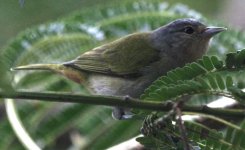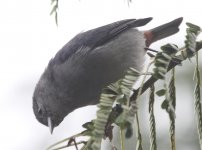opisska
rabid twitcher

Again REGUA (lowland swamp in lush forest near Rio) with a more specific problem - these two look to me like a nice pair of Chestnut-vented Conebills - apart from the fact that the female is not supposed to have the chestnut vent according to both books and photos online ... Am I completely wrong with these?








